RICHMOND, VA - The much younger cyclists ahead of me on the lovely Virginia Capital Bike Trail strain to reach the top of a small incline while I ring my bell and pass them with ease. They appear to be impressed with the elderly rider’s stamina, until …
“Hey, that’s cheating,” they laughingly shout when they notice I’m riding an electric bike.
“Don’t worry about what people say, we (seniors) need to take advantage of all the opportunities presented to us,” advises Buck Ward, owner of Pedego Electric Bikes on East Cary Street in Richmond’s historic downtown core, where I pick up my powered cycle.
Ward, who purchases his effortless bikes from a California company because “they make the best product for our clients,” set up his business in 2008 to offer visitors a unique way to see this charming southern city up close.
Pedego offers several tours along planned trails to historic plantations like Shirley and Berkeley as well as neighbourhood tours around Richmond which introduce visitors to iconic districts like Monument Avenue, Jackson Ward and trendy Church Hill.
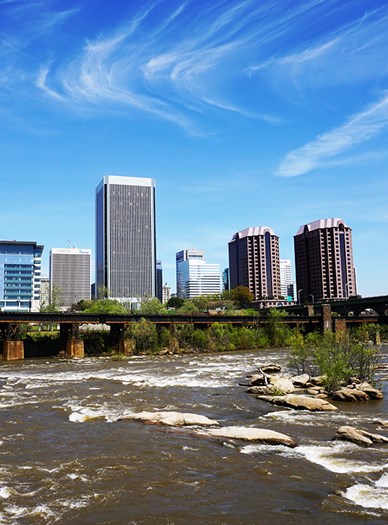
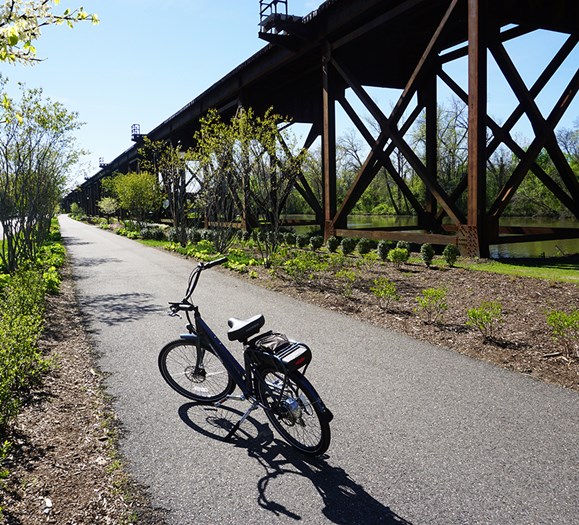
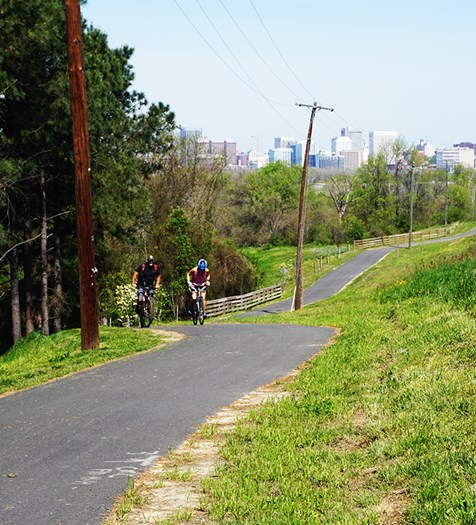
Left: Richmond is one of the most progressive cities in the U.S. Middle: Cycle routes take you on a journey back in time. Right: Richmond cycle trails extend into rural areas as well.
Knowing this is my first visit to Richmond, Buck suggests I take a ride along the Capital Bike Trail, which links Richmond and historic Jamestown, Virginia’s current and former capitals. The 89-kilometre route lets you experience 400 years of Virginia history and passes some lovely rural sections of the state, featuring idyllic rolling farm land, historic markers and stately southern homes.
“You won’t have time to complete the entire route this morning so I suggest you go as far as Ronnie’s BBQ — the best ribs in Richmond — about eight miles (13 kilometres) out of town and come back,” says Buck.
After giving me instructions on how to operate the easy to use powered bicycle, Buck points me in the direction of the James River. I follow some shaded cobblestone streets until they intersect with the Virginia Capital Bike Trail a few blocks away. The well marked paved trail follows the tranquil James River before drifting into picturesque Virginia Route 5 a few kilometres outside Richmond.
I’m quickly introduced to reminders of Richmond’s industrial past when I pass Tobacco Row, where cigarette companies operated for decades. Now most are gone and the handsome red-birck buildings where the lethal product was once produced are being turned into upscale condos.
I ride under a railway trestle where a freight train rumbles overhead, and past some old warehouses, their walls now being used as a canvas by the city’s creative street artists. Abandoned farming equipment along the river’s edge has been overtaken by nature and time and is now part of the local landscape. The Virginia Holocaust Museum and the Negro Burial Ground make me stop and pause and I wish I had time to explore the Richmond Slave Trail — a branch of the main route.
Those adventurous enough to follow the entire Virginia Capital Bike Trail — it opened in 2015 — get to see the homes of three former U.S. presidents — John Tyler, William Henry Harrison and Benjamin Harrison — colonial Williamsburg, which is often described as America’s most beautiful town, and unique wildlife habitats — one contains the largest concentration of bald eagles in the U.S.
Because the route is mostly flat and the inclines are usually gradual, it’s not often I have to engage the bike’s peppy electric motor — every so often, though, I hit the throttle just for the thrill.
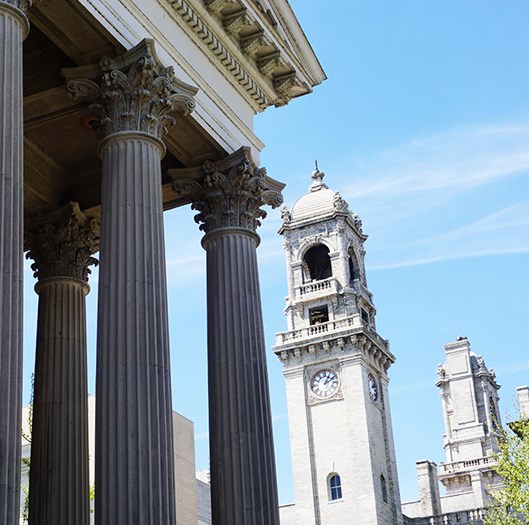
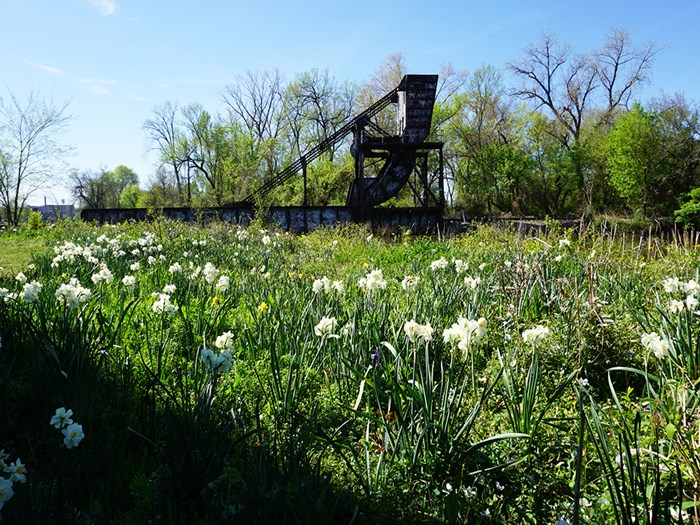
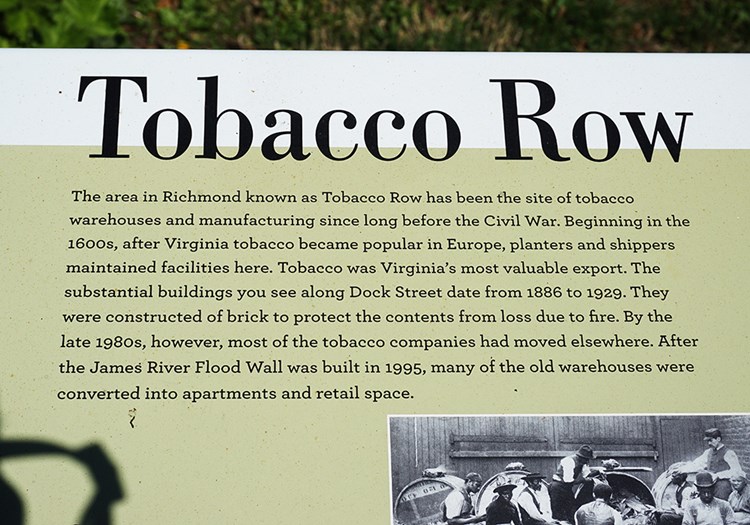
Left: Richmond has a very handsome downtown. Middle: Old farm equipment has been swallowed up by nature. Right: Richmond is where the tobacco industry thrived.
When I reach Ronnie’s, a blinking sign informs me the landmark restaurant is “closed” and so I’m forced to return to Buck’s cycle shop on an empty stomach. However, the Capital Bike Trail has increased my appetite to savour more of what Richmond has to offer, so after a quick lunch at trendy Citizen restaurant on East Main Street — my fried chicken and jerk collard plate comes complete with the most amazing grits I’ve ever tasted — I indulge in some of Richmond’s other pleasures, like:
• The American Civil War Museum at Tredegar: Being ground zero for the Confederacy, Richmond offers the motherlode of Civil War sites and none was more important to the south’s ambitions than Tredegar, a munitions factory and iron works that churned out lots of ammunition for the South during the War. It’s been transformed into one of this city’s most popular museums and the grounds of Tredegar are littered with old guns and statues. Inside the museum the history of the site and Richmond during the Civil War are told through some informative displays. http://http://acwm.org/
• Tyler Potterfield Memorial Bridge: Just a short walk from Tredegar I find this handsome pedestrian bridge made of polished metal that’s also known as the Dam Walk. The bridge crosses the foamy James River rapids, linking the city’s north and south sides, and offers some of the most beautiful views of Richmond’s stunning skyline. It’s a great gathering spot for locals and visitors, alike.
• Lewis Ginter Botanical Gardens: Some of Richmond’s most popular landmarks are located on the city’s north side — a short drive from downtown — and there’s no better proof of that than this Garden of Eden. Named after Lewis Ginter, a prominent Richmond businessman, military officer, real estate developer and philanthropist, the 50-acre site offers some truly remarkable gardens. Since opening in the early ’80s, it has been a popular gathering spot for families and tourists. The floral displays and ponds are very soothing. http://www.lewisginter.org
• Monument Avenue: Much of Richmond was levelled during the relentless bombing by the North during the waining days of the American Civil War, so the city had to be totally rebuilt. The stately homes gathered along Monument Avenue are proof that Richmond got better after the war. However, as the name suggests, the lovely street features many monuments dedicated to Confederate heroes like Robert E. Lee, J.E.B. Stuart, Jefferson Davis and Stonewall Jackson, and their presence does upset some people. The one monument on this street that everyone likes, though, is the one of the late tennis great and Richmond’s favourite son, Arthur Ashe. Monument Avenue is where the city’s annual Easter Parade takes place and it’s a colourful event.
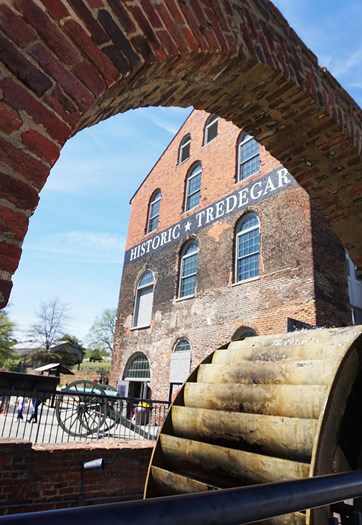
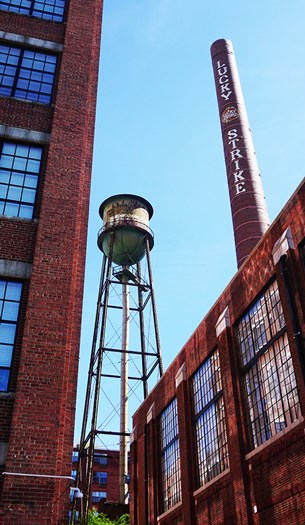
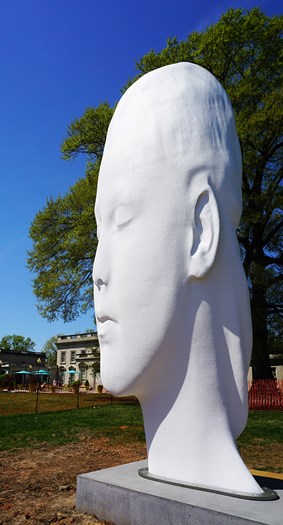
Left: The American Civil War Museum at Tredegar. Middle: Cycle trails pass old tobacco factories now being turned into upscale condos. Right: An impressive sculpture at the Virginia Museum of Fine Art.
• Edgar Allen Poe Museum: The great American writer spent a lot of time in Richmond and worked at the city’s Southern Literary Messenger newspaper. His mother is buried in Richmond’s Church Hill neighbourhood, close to the house that now serves as his museum. The museum — Poe never lived in this house — contains many of the legendary writer’s manuscripts, letters, first editions and personal belongings. http://www.poemuseum.org/
• Carytown: Chicago’s upscale shopping district along Michigan Avenue is known as the “Magnificent Mile” and Richmond counters with the “Mile of Style”, which I find in an area known as Carytown on West Cary Street. Instead of chic European designer shops, though, Carytown features a collection of eclectic shops, trendy restaurants and interesting specialty shops. The Daily Kitchen and Bar and Home Sweet Home are two restaurants I highly recommend. Carytown is regarded as the best shopping neighbourhood in Virginia and I second that. http://www.carytownrva.com/
• Virginia Museum of Fine Art: Why go to Paris or Rome to see the relics of the ancient world when Richmond’s fabulous Museum of Fine Art offers all that and more. This museum’s Fabergé egg collection makes the Hermitage green with envy and its Roman and Egyptian sections rivals anything I’ve seen in the Louvre. https://vmfa.museum/
• Virginia Commonwealth University: The grounds of this revered institution are a real pleasure to walk and the neighbourhood homes surrounding the university’s stately buildings are doll-house pretty. The university’s medical school is one of the most prestigious in the country and the students give this old city a youthful vibe. http://www.vcu.edu/
• Jefferson Hotel: Richmond’s premier property, which was built by Lewis Ginter, features a white marble statue of Thomas Jefferson standing under a canopy of Tiffany stain glass in a posh lobby. It’s one of the most incredible hotels in the United States — rooms are lavish, the ambience and service reflect a grand European style, and the main gourmet restaurant, Lemaire, is France worthy in every sense.
http://www.jeffersonhotel.com
Richmond is indeed a city that keeps getting better with age.
Information
For information on how to rent Pedego Electric Bikes, go to www.PedegoRVA.com / For information on Richmond, go to www.visitrichmondva.com / For Virginia tourism information, go to www.virginia.org / The best way to get to Richmond is through Washington’s Dulles Airport. Air Canada and several U.S. airlines offer direct daily flights to Dulles. Richmond is a two hour drive south of Washington.